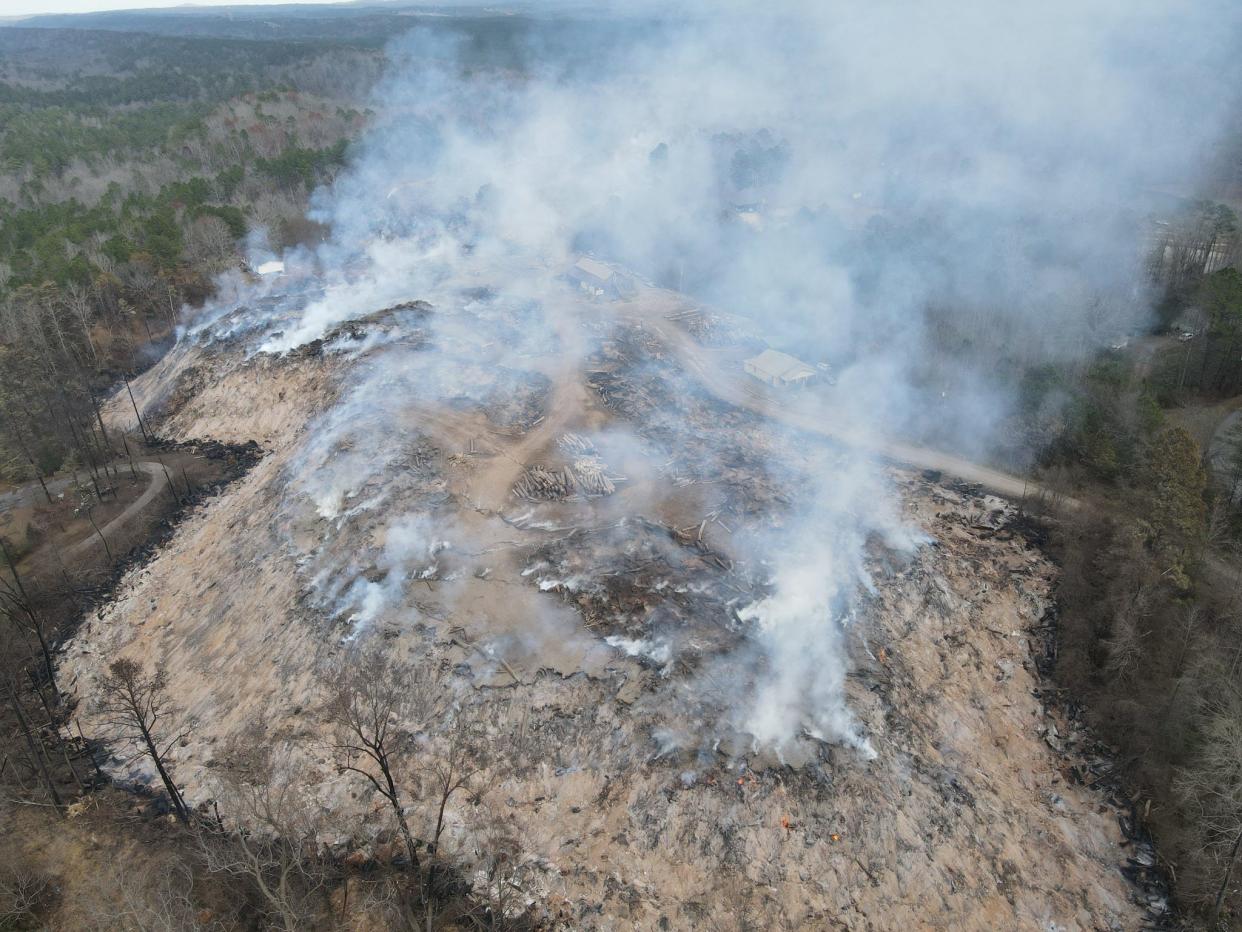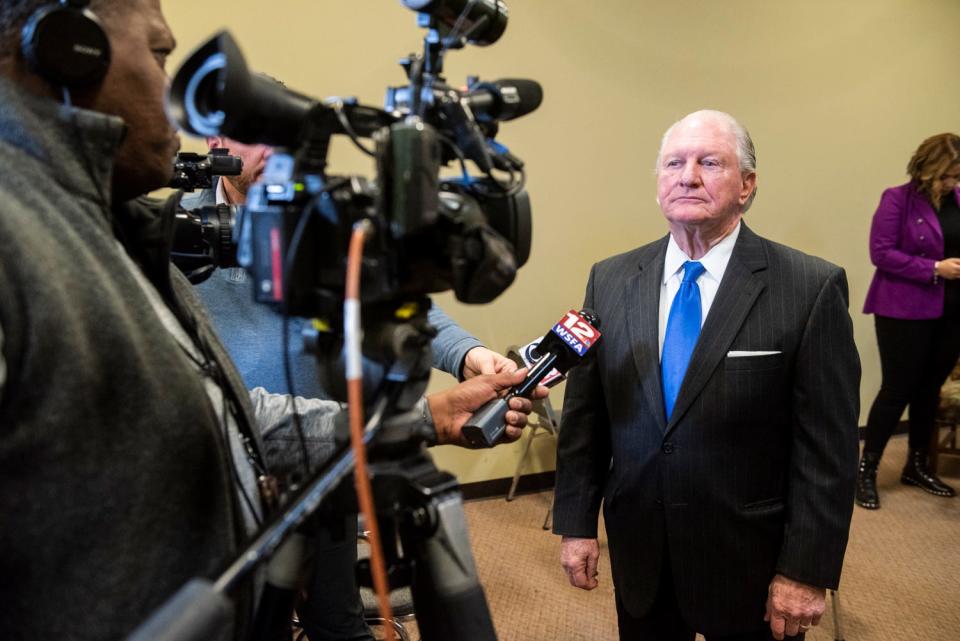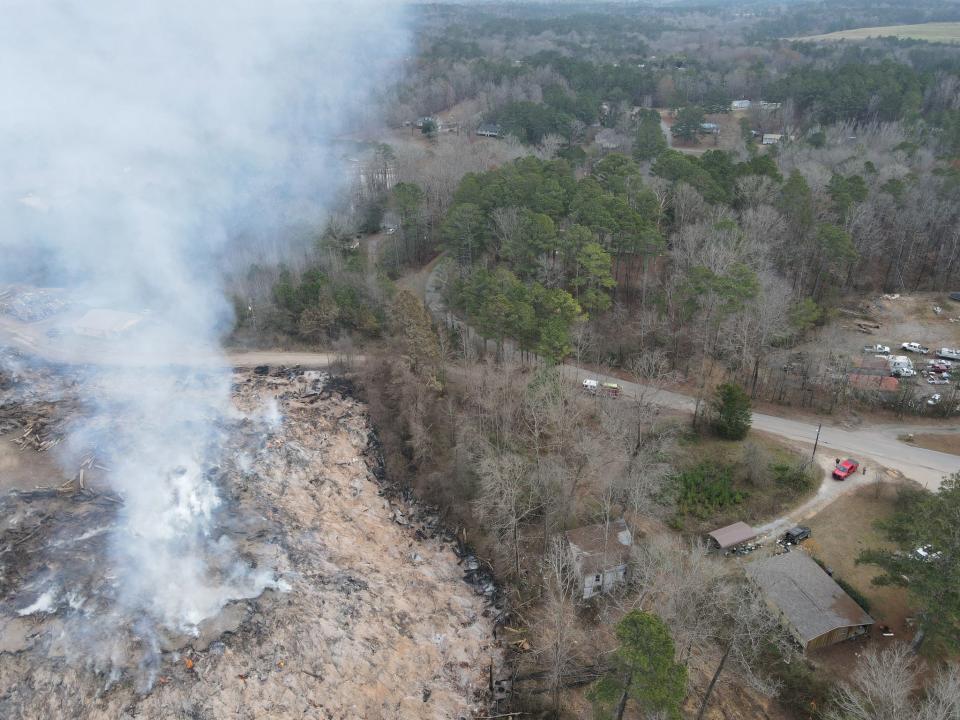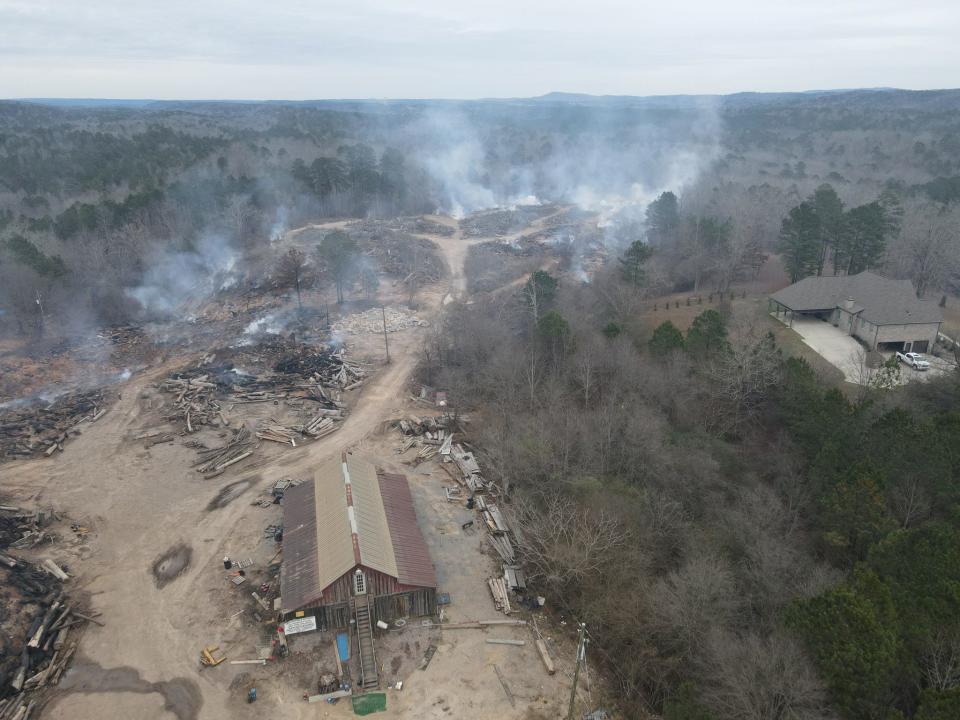Hot mess: Why a landfill fire has raged underground for months in Alabama

Editor's note: This story was updated on Feb. 15 to include that some environmental attorneys refute ADEM's claim that they don't have the existing authority to regulate vegetative waste landfills.
An underground fire at Environmental Landfill, Inc. in St. Clair County keeps burning, as it has for over two months now.
Though various government officials, ranging from the local to federal levels, have been engaged for nearly three months, the cause of the fire remains undetermined.
Residents report an overwhelming smell and complain of the smoke. Some have temporarily relocated to avoid its impact, and residents who remain in their homes near the fire have been advised to limit outdoor activities and “install high-efficiency filters” in heating and air conditioning systems.
Newest updates
On Feb. 10, Alabama Department of Environmental Management Director Lance LeFleur addressed the Environmental Management Commission about the fire near Moody.
Since the U.S. Environmental Protection Agency took over efforts to stop the fire on Jan. 19, LeFleur said smoke in the area has been “greatly reduced.”
“EPA expects the fire to be out in a matter of weeks if not sooner,” he said. “As we have stated before, ADEM will investigate and take appropriate enforcement action against the site operator after the fire is out.”

The landfill is privately owned, but because “the owner was either unable or unwilling” to extinguish the fire, the responsibility has been pushed to local, state and federal agencies.
“This fire is an extraordinary event. It exposed shortcomings in the ability and authority of state and local governments to respond to situations that are outside the scope of regulated activities but nonetheless pose risks to the public,” LeFleur said. “We are in talks with representatives of county governments and other agencies about ways to close these gaps.”
Was the landfill unregulated?
Environmental Landfill, the location of the fire, is designated as a “vegetative waste disposal site,” meaning that the only materials meant to be disposed there are natural ones, like leaves, limbs, trees and shrubs.
ADEM says these types of materials are not regulated by state or federal agencies, so neither the state environmental management agency nor the EPA regularly monitored the landfill.
However, some environmental attorneys, like David Ludder, say ADEM's claims are false, and the department actually does have the existing authority to regulate vegetative waste landfills.
"No provision in the Solid Wastes and Recyclable Materials Management Act exempts stumps, logs, tree limbs, brush, yard trimmings, leaves and other vegetative debris from the requirement that 'solid waste' be disposed of in 'a permitted landfill or permitted incineration,'" Ludder wrote in a letter to the Environmental Management Commission. "To the extent that ADEM has interpreted the Solid Wastes and Recyclable Materials Management Act to provide such an exemption, the interpretation is erroneous, inconsistent with the Act, and an usurpation of legislative power."
Multiple times since 2013, residents have complained to ADEM about the presence of unauthorized materials in the landfill — like tires, shingles, rubbish, construction and demolition wastes.
ADEM says that upon receiving these complaints, multiple investigations and inspections occurred where “incidental regulated waste” was discovered and addressed.
Discoveries from past inspections of the landfill

Eighteen documents related to inspections of the Environmental Landfill are available through ADEM’s eFile system.
In an August 2022 inspection report, which was the last documented inspection prior to the start of the fire, the inspector noted that an undetermined amount of construction demolition waste had previously been buried on-site.
The report also noted that creosote-soaked power poles and palettes had once been located in a specific area of the landfill. Creosote is a wood preservative that is highly combustible. The EPA advises that creosote-soaked wood not be burned “in a residential setting to avoid possible inhalation of toxic chemicals in the smoke and ash.”
At the time of the August 2022 inspection, facility staff indicated to the ADEM inspector that the poles and palettes previously found in that area had been taken to “appropriate landfills.”
Further back, an ADEM inspector found a fuel supply tank used for on-site equipment. Because it was sitting on the ground, not on a catch-basin like a concrete or rock pad, the inspector forwarded that information to ADEM’s Industrial Hazardous Waste Section.
The inspector also noted that the lack of availability of adequate water at the landfill was a fire hazard.
The cause of the underground fire has not been released, and ADEM had said it will begin investigating the cause once the fire is under control.
What water and air quality looks like for residents

The reason the EPA was able to take over as the lead in extinguishing the fire was because its air monitoring units determined that the smoke from the fire posed a certain level of risk to public health.
Tests found four chemicals above the accepted minimal risk level in the air at the landfill and two of chemicals above the accepted minimal risk level in the air offsite. The EPA continues to operate mobile air monitors in the area.
As for the water quality, LeFleur reported on Feb. 10 that the fire does not seem to be having “any discernible effect on water quality.”
The information on the water quality testing was initially released Feb. 3.
“Some residents have expressed concern that runoff from the site could be having an adverse effect on the water in nearby streams,” head of ADEM’s Water Division Jeff Kitchens said in a statement. “We started testing the water to see what effect, if any, the fire was having, and to make that information available to the public. Fortunately, what we have seen so far tells us the fire is having little impact on water quality.”
Officials’ advice for residents near Environmental Landfill
In addition to limiting time spent outside and installing “high-efficiency” air filters, ADEM suggests residents who live in Moody, Trussville or anywhere near the fire “seal areas where outside air may enter the home with caulking or other material.”
ADEM also says residents can consider “obtaining a personal air quality monitor” and adjusting activities “to limit exposure to poor air quality.”
Additionally, ADEM’s website for Moody fire updates says, “Because the smoke may continue for an extended period, those with breathing-related health conditions may consider temporarily relocating.”
Hadley Hitson covers the rural South for the Montgomery Advertiser and Report for America. She can be reached at hhitson@gannett.com. To support her work, subscribe to the Advertiser or donate to Report for America.
This article originally appeared on Montgomery Advertiser: What we know about St. Clair County's months-long underground fire

